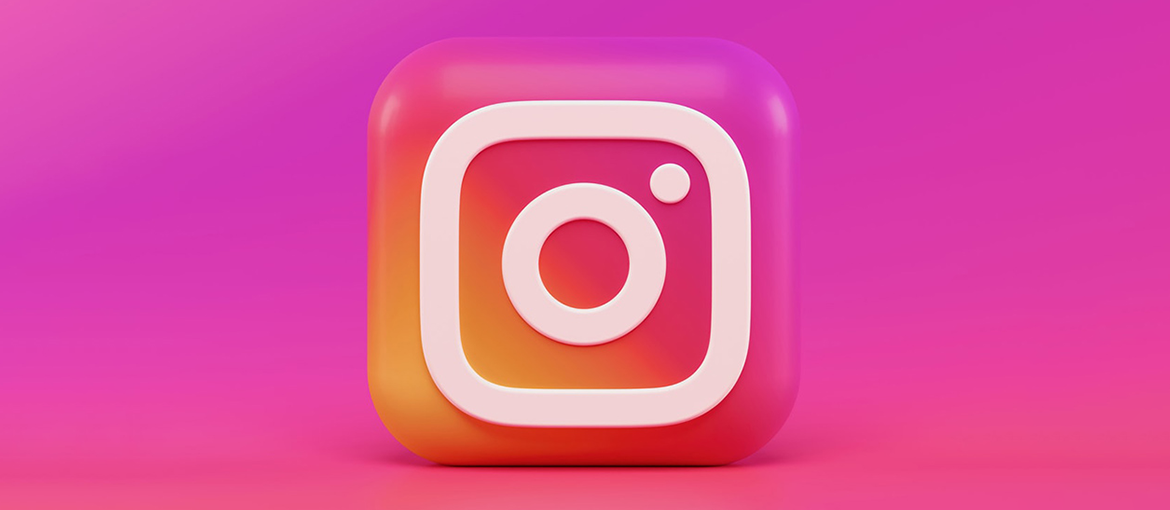Table of Contents
Instagram has for some time been a popular platform among illustrators, cartoonists, graphic designers and artists for showing off their work, finding new freelance jobs or simply building and developing a community of fans of their work. After all, the Facebook-owned social media platform has over one billion active users all over the world.
We have already looked at the five key steps to take if you want to become an illustrator. This article will investigate one of these in more detail, marketing, and specifically marketing using Instagram. Many artists underestimate this crucial aspect and concentrate solely on their production, but promoting your work on social media is now essential if you want to bolster your profile, increase the number of contacts that could lead to actual work and generally position yourself as an artist.
Here are the key strategies you should follow to build a strong presence on Instagram, even if you are starting from scratch.
Create an engaging profile
The first step is obviously to create a profile on Instagram. Anyone can do it, but we recommend setting up a company profile, which the social network calls a ‘professional account’ or Instagram Business. If you already have a standard Instagram profile and want to take this step, the process couldn’t be simpler: simply go to the app’s settings and select ‘Switch to a professional account’.
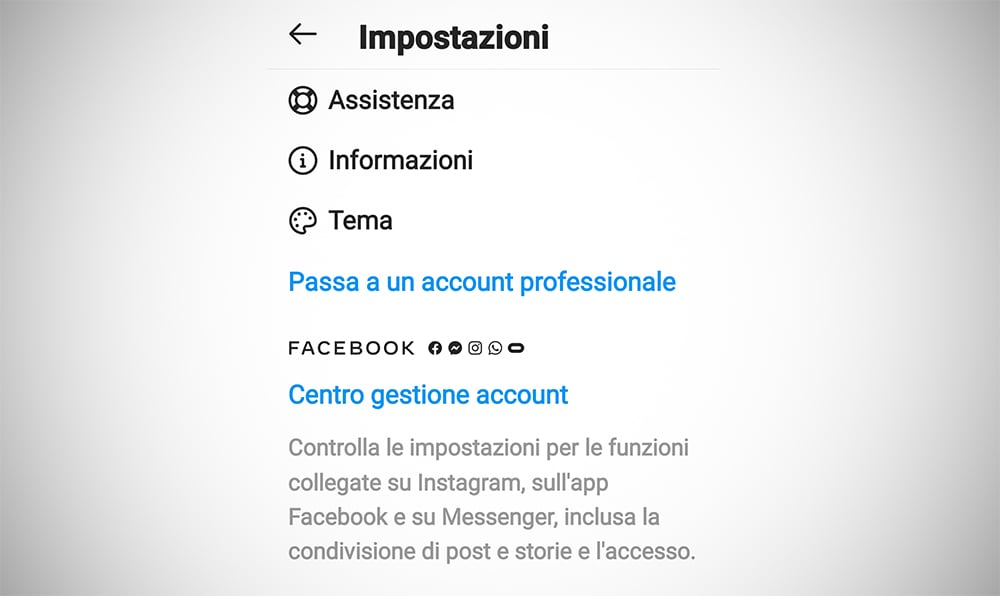
Having this type of account gives you statistics on your followers and on how your account is performing, and also allows you to create sponsored posts. Once you’ve done this, here are some general tips for creating an interesting profile:
- Profile photo: this is one of the most important aspects to consider, because it immediately identifies the character and identity of the person creating the illustrations or graphic design. All you need to do, therefore, is choose a piece of work or a drawing that represents your art. Your profile image must be at least 110 x 110 pixels, but 180 x 180 pixels is the optimal size.
- Bio: this is an artist’s virtual business card, and probably the most important piece of text on your profile. It should be absolutely perfect, and you can also add a link, perhaps to your profile or website, as well as a few hashtags that represent your brand.
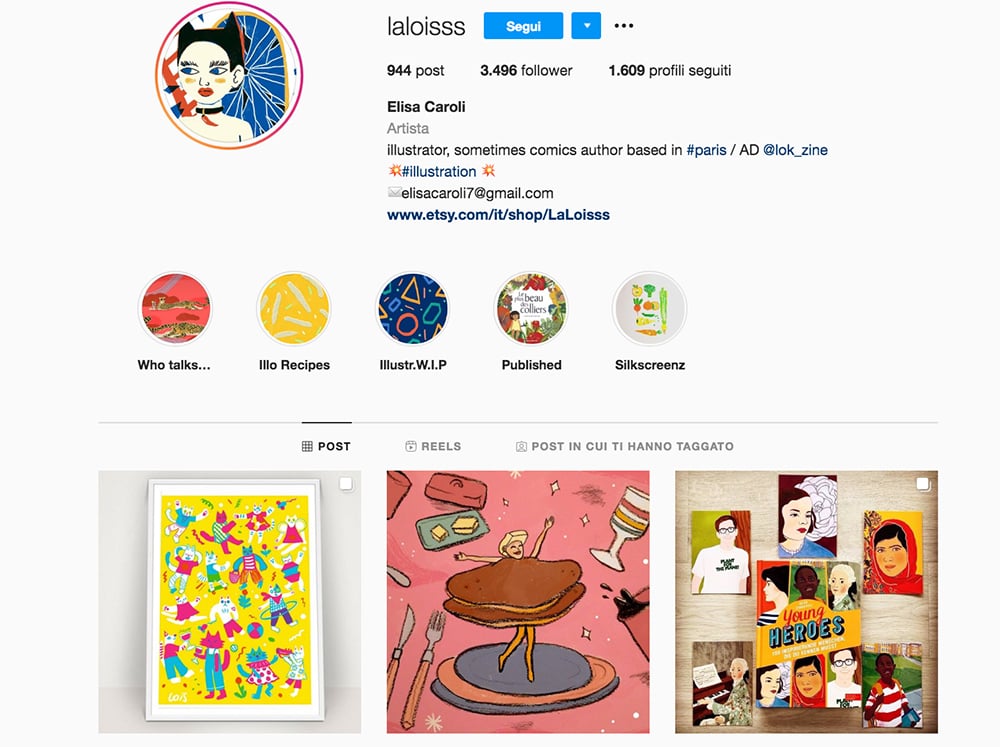
Focus on content
Once you’ve created your profile, you need to come up with a precise content strategy, in other words a plan of what to publish and when. It may be easier to publish things ‘whenever you feel like it’, but if you want to achieve a good presence on the platform and gain a good number of followers, you need to be organised over the long term and consistent in the things you publish. Here are some hints for a good content strategy:
- Only use your profile to show off your work as an illustrator, cartoonist or graphic designer. If you want to publish photos of a panoramic view or cityscape, you’re better off using another account.
- You can also use your Instagram profile as a way of sharing the process involved in creating an illustration. Many professionals produce brief ‘behind-the-scenes’ videos or photos showing their work taking shape.
- The caption that accompanies each photo is vital for creating interaction with users on the platform. You are limited to 2,200 characters, but Sprout Social recommends limiting text to no more than 150 characters for organic posts, or 125 for sponsored posts. Asking questions in captions can be an excellent way of instantly creating engagement.
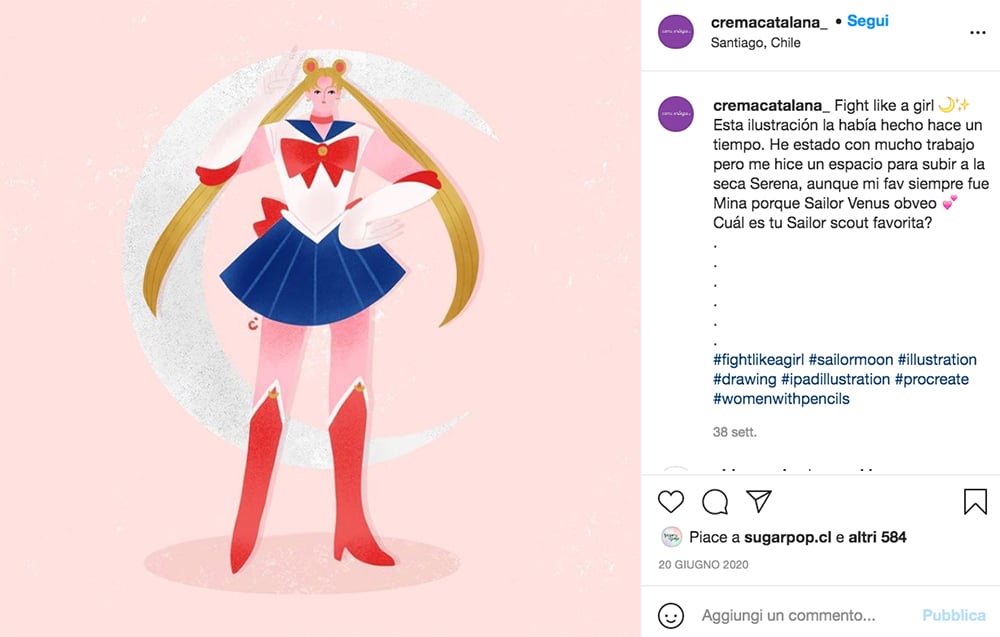
- It is also a good idea to add a watermark to your images or illustrations, perhaps in the bottom right-hand corner, along the lines of ‘follow @username’: this makes it immediately obvious who created the image, so it is easier for others to find you, particularly useful if your content ends up being shared outside Instagram.
Understand hashtags and exploit their potential
Hashtags are very important on Instagram: you can use a maximum of thirty on each post, and they undoubtedly help increase the visibility of your content. The platform is full of art directors looking for artists or illustrators to hire, and people with few followers in particular have to use hashtags smartly if their work is to reach a wider audience. People tend to use English to ensure their message reaches as many people as possible. Here are some hints and tips:
- Always use the right hashtags for each post. Hashtags on Instagram can be divided up into ‘general’ and ‘specific’. General hashtags include #art, #artaccount, #art_4share, #artist, #artwork and #dailyart. Using the platform’s internal search function, you can see the number of posts linked to any one hashtag, and therefore see how ‘crowded’ it is.
- ‘Specific’ hashtags, meanwhile, reflect the type of design shown in the post. For instance, is it a sketch, a drawing or a digital illustration? You should search for and use different hashtags for each different style. For example, #drawings, #draw, #drawingskill and #instadraw are all useful for drawings. For sketches there is obviously #sketch, but there are many others too, including #sketchartist, #sketchbook, #sketchbookpages and #digitalsketching. For illustrations, meanwhile, there are #illustrations, #illustrating, #illustration_best, #illustratorofinstagram, #illustrator and many more besides.
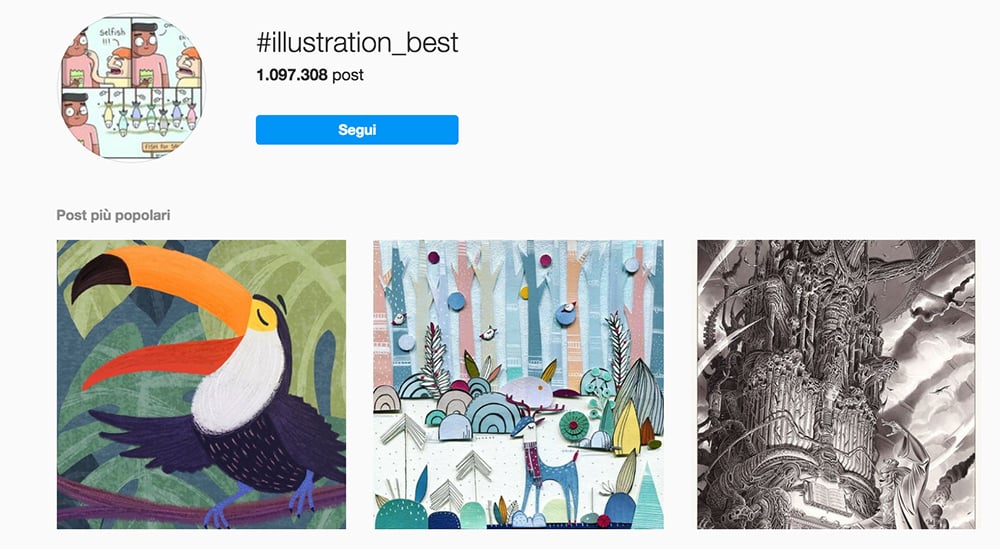
It is therefore important to understand your work and draw up a list of relevant hashtags before publishing anything. A useful tool for this process is a hashtag search engine like this one, which also recommends similar hashtags and provides interesting data so you can devise a more calculated strategy.
Create engagement to foster growth
To ensure your posts are seen by as many people as possible, and perhaps even by decision-makers who may want to start a dialogue with you, you need to have a good strategy for engaging your followers. A good starting point is knowing that Instagram rewards those who produce a lot of content, in other words those who post frequently. Here are some tips:
- Follow other artists and interact with their posts using likes and comments. The aim is to become part of a community of artists, making it more likely that your profile will be noticed, visited and followed. Obviously, don’t go overboard with your comments and likes: focus in particular on artists that match your tastes.
- When you gain a new follower, it is worth starting a brief conversation with them, even if it’s just to say thank you. This creates a much closer bond between the artist and the people who appreciate their work, and can lead to new opportunities.
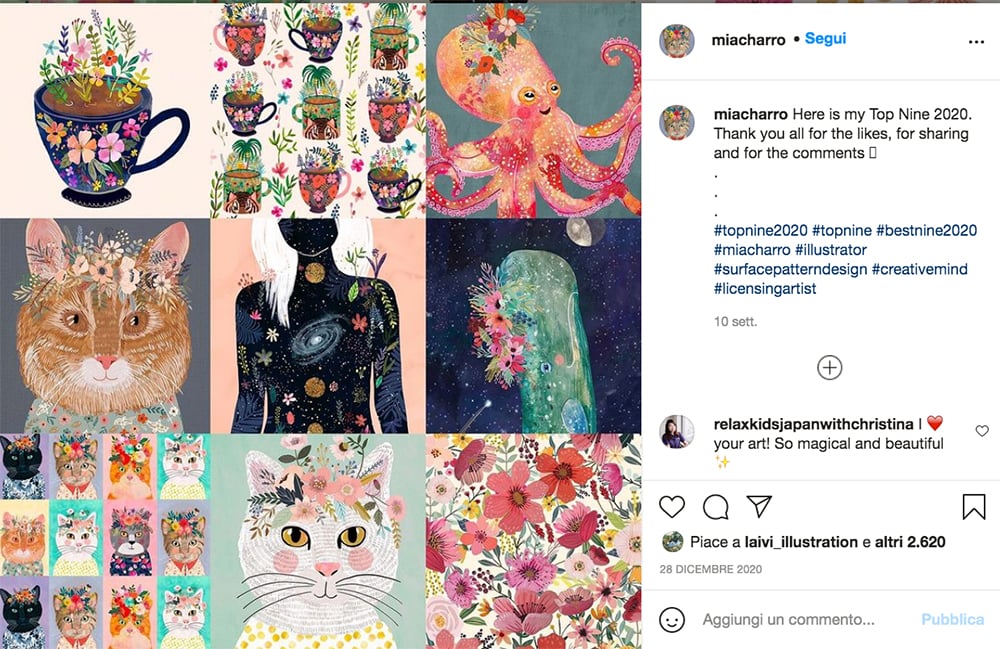
Harness the power of Instagram Stories
Designers and illustrators are increasingly using Instagram Stories to promote their work. This ephemeral content disappears from the platform after 24 hours, but it tends to get more views than classic posts do. Here are a few creative ways to use Stories:
- Don’t publish Stories like you do posts. Instead, use them to show off your work in a more natural way. If your feed is effectively a portfolio, the Stories can be used to showcase the creative process, with a behind-the-scenes video of an illustration or a photo of you during the creative process.
- You can also use Stories to display sketches, adding friendly annotations.
- Don’t underestimate the value of Stickers for asking questions, carrying out surveys or adding hashtags, and don’t forget to add links in your stories to places to buy your products.
In any case, the most important thing you can do is get started by setting up an Instagram profile to show off your work. Only by ‘doing’ will you learn the tricks and best shortcuts on the platform, which can provide enormous satisfaction for even the most timid of artists.

